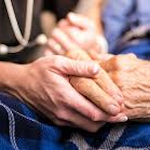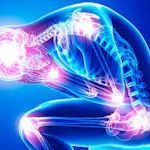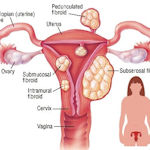
Dr. Maxwell Nartey
Professor of Symptometric Science, American School of Symptometry, NFP
Thousands of individuals are suffering from tremors, which medical experts call parkinsonism. This neurological disorder was named after the British physician who first described it. This physician was Dr. James Parkinson (1755-1824).
According to medical experts, it is “the deterioration of the brain cells that produce dopamine” which causes parkinsonism. This assessment is flawed at its core because it leaves two questions unanswered.
These two questions are: 1) what causes the deterioration of the brain cells that produce dopamine and 2) what is dopamine made with? There is a treasure-trove that the medical experts chose to ignore so that they can conveniently treat parkinsonism with pharmaceutical drugs. Symptometry will not ignore this treasure-trove because it is invaluable to this discussion. First, let us start with dopamine. What is it?
Dopamine is a neurotransmitter. The adrenal cells produce it. Then, the basal ganglia store it, and they release it to the axons. The axons will transmit dopamine across the synapse (gap) to the dendrites. It is the regularity of this transmission 24 hours a day that maintains nerve stability.
With what is dopamine made? Dopamine is made with the non-essential amino acid called tyrosine. It is the liver that converts the essential amino acid called phenylalanine to the non-essential amino acid called tyrosine. This is how tyrosine becomes the raw material for making serotonin, melatonin, dopamine, acetylcholine, etc.
Therefore, if a person’s liver is compromised, it will not be able to convert phenylalanine to tyrosine. This will cause a shortage of natural tyrosine in the person. I am explaining how the liver is critical to the stability of our nerves. This discussion reveals that parkinsonism is not only a brain problem as the medical experts pointed out. It is also a liver problem. What can the brain achieve without the liver? Nothing. Leaving out the liver when treating parkinsonism will amount to cell neglect.
It is cell neglect that causes the deterioration of the liver and the brain; and it is this deterioration that causes parkinsonism. Here are the questions a doctor of Symptometry will ask the person who suffers from parkinsonism.
Does the person drink tea, chocolate milk, coffee, wine or liquor? Does the person eat nuts, grapes, chocolate, oatmeal, seaweed, rishi mushrooms, maitake mushrooms, shiitake mushrooms or algae? Does the person treat himself or herself with pharmaceutical salts like maleate, citrates, mesylate, nitrates, tartrates, aluminums or gluconates? If the answer to all these questions is yes, the underlying causes of their parkinsonism will be within reach. Here is why.
Tea has a poison called theophylline. Coffee, and chocolate have a poison called theobromine. Acetaldehyde in grapes and in wine is a dopamine inhibitor. The heavy metals in liquor will denature the enzyme that is in the synapse. Prussic acid in all nuts is a poison.
What does poison do? It blocks the three-way communication involving the genes, DNA and the three RNAs. Also, all poisons denature enzymes. How can parkinsonism be cured when the person’s lifestyle makes it impossible for their genes, DNA and RNAs to function?
The genes must release the blueprint to ribosomal RNA through DNA. If this cannot be done, parkinsonism will not be cured. Plain and simple.
What about oatmeal, seaweed, mushrooms and algae? They have beta glucans, a salt-releasing natural substance that sea creatures and mushrooms produce to cause cytoplasmic imbalance in the animal or in the person that eats them. Yes, plants have a self-defense mechanism, and this mechanism consists of poisons, toxic acids or toxic alkaloids. Beta glucans poison the eater.
What about pharmaceutical salts? They cause cytoplasmic imbalance. What is cytoplasmic imbalance? To answer this question, it is important to define salt. What is it?
Salt
Salt is the substance that releases cations (positive charge) and anions (negative charge) in water. In water, acids split into hydrogen ions and anions, and alkalis split into hydroxide ions and cations.
A human being is made of 93% water, and for every bone cell, muscle cell, nerve cell, visceral cell, hair cell, etc. to function, it must have an equal amount of cations and anions in its cytoplasm.
The best cell salt is the salt that releases equal amounts of cations and anions. This salt is sodium chloride (ordinary table salt that is used for cooking).
It is cations and anions that enable the electrons that orbit the nucleus to produce electrical energy and magnetism for our cells while metabolism produces thermal energy (heat).
The unhealthy salts are those that release more anions than cations; and it is the overwhelming presence of anions that causes an imbalance in the cytoplasm. All the cellular organelles are in the cytoplasm. Therefore, what affects the cytoplasm will also affect their activities.
The unhealthy salts that cause cytoplasmic imbalance are: pink salt, Himalayan salt, rock salt, sea salt and iodized sea salt, as well as pharmaceutical salts. Then, a person who avoids cooking salt will have even more health problems.
Parkinsonism does not occur overnight. It takes over 30 years of chaotic eating, chaotic lifestyle and reckless self-poisoning to cause the kind of cell neglect that results in parkinsonism.
Since it takes over 30 years of self-poisoning to cause parkinsonism, does the person who suffers from this disease expect the disease to be cured with only three or four rounds of symptometric treatment? This is impossible.
Human physiology is governed by the laws of physics and biochemistry. Electron exchange did not take place around the nucleus to facilitate cell nourishment; and this is because there are more anions than cations in the cytoplasm and around the nucleus.
If the nerve cells are not nourished, how can they produce new cells? They cannot. How can fresh nucleotides replace old DNA in a nerve cell? They cannot. I am using biochemistry to explain why the practitioners who ignore biochemistry cannot cure parkinsonism.
Curing parkinsonism
To cure parkinsonism, the laws of physics and biochemistry must be allowed to take their course. I was one of these individuals who applied the laws of physics and biochemistry to cellular health and I got excellent results.
Sometimes, I would be sitting down and watch my index finger move by itself, or my index finger, my middle finger and my thumb would start to tremble, just like that.
Also, at one point, my entire right hand would shake, and these anomalies were happening because I was eating oatmeal for breakfast, almost every morning. Later, I developed nasal polyps.
Correlation diagnosis, which I invented, enabled me to connect polyps and trembling to oatmeal, and I got this connection right.
What is in oatmeal that causes such anomalies? Thanks to botanical research, I uncovered beta glucans, and the plants that produce them.
Further research revealed that beta glucans release salts that have more anions than cations. Therefore, the trembling I was experiencing was the direct result of cytoplasmic imbalance that the beta glucans were causing. I cured these disorders swiftly with a particulate because I did not drink tea, coffee, chocolate milk, wine, and liquor, and I stopped eating oatmeal.
Also, I cured it swiftly because I did not eat nuts, corn, seaweed, and mushrooms. Finally, I did not take pharmaceutical salts. Basically, I cured early stage parkinsonism because I had fewer poisons in my systems than most individuals.
Can a person who drinks coffee, eats nuts and oatmeal, and takes pharmaceutical drugs, cure parkinsonism with diet modification after one round of root-cause treatment? The simple and direct answer is, no. This is impossible because all the poisons, and the unhealthy salts in their systems must be hydrolyzed, ionized or oxidized. Then, electrolytic dissociation must be used to break up the bonds of the toughest poisons that are still locked in their cells.
Parkinsonism can be cured, and Symptometry cures it because it is using symptometric science, not medical science. Medical science deliberately leaves out biochemistry, botany, food science and water science; symptometric science does not. This is the difference.
However, a lot would also depend on how much poison is in the person, how many cells are calcified, and how quickly fluidity can be restored to the cytoplasm by maintaining equal amounts of cations and anions.
The disease is not the problem. The real problem is the person who has the disease, meaning their attitude and mindset.
If parkinsonism is not cured, the heart will be affected. This is because the heart is nothing but muscles; and nerves are imbedded in the cardiac muscles.
Eventually, grip will be lost, speech will be slurred, vision will be impaired, the ability to swallow will be lost, mobility will be impaired, constipation will be frequent, urinary incontinence will be constant, digestion will be extremely slow, gassiness and bloating will be constant, numbness will be constant, memory will lost, sense of taste or smell will be lost, and so on and so forth.
Every person with parkinsonism who was treated with pharmaceutical drugs experienced the above-mentioned symptoms associated with degenerative disease before they died.
Dr. James Parkinson, the British physician who first described parkinsonism, could not cure this disease. He died in 1824. Between 1821 and 2021 (200 years), physicians have still not been able to figure out the underlying cause of parkinsonism. Symptometric science figured it out, and it is curing it. I cured mine. “Physician, heal thyself”. I did. A totally different science is needed to understand parkinsonism, and this different science is symptometric science.
© Copyright 2021, The American School of Symptometry, NFP. No part of this publication may be reproduced or transmitted in any form or by any means, electronic or mechanical, including photocopying, recording, or by any information storage and retrieval system without the written permission of The American School of Symptometry, NFP. Library of Congress copyright number Txu 1-621-370, Washington D.C.


 Previous Post
Previous Post Next Post
Next Post